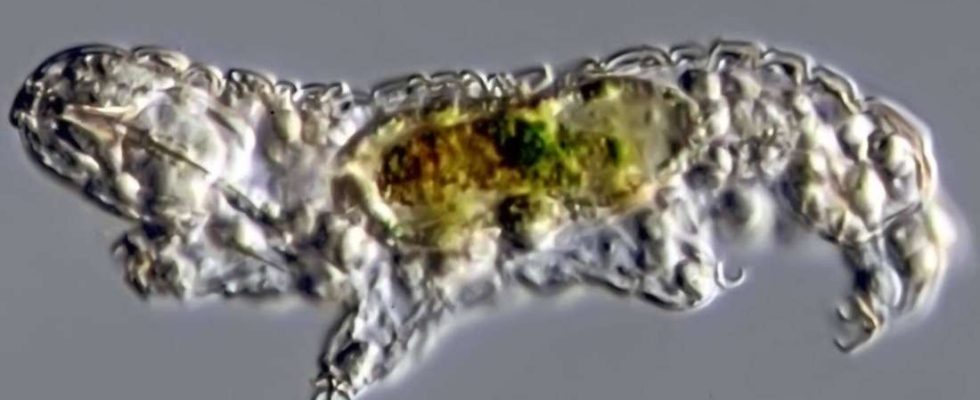Bear animals survive in the most inhospitable places. Researchers have now found an explanation for a life-saving mechanism.
USA – They look clumsy and almost cute, and are almost indestructible: tardigrades. The microorganisms have made a name for themselves through their almost unsurpassed resistance. Dehydration, arctic temperatures and lack of oxygen have virtually no effect on the animals, also known as water bears.
The reason for this lies in a protective state that the tardigrade can enter in the face of such extreme environmental situations, called “Tönnchen”. The water bear retracts its characteristic little legs and the metabolism virtually comes to a standstill. It was still unclear what triggered this mechanism in the animals. Researchers in the USA have now found an answer to this. Your study was carried out in Journal PLOS ONE published.
The role of free radicals is central to the research group’s results. The oxygen atoms or molecules with unpaired electrons are very reactive because they “steal” electrons from other atoms. This creates so-called oxidative stress, which usually damages cells and compounds such as proteins and DNA.
Reaction with amino acid triggers protective mode in tardigrades
The special thing is that, according to the study, the tardigrades do not try to protect themselves from free radicals. Rather, the free radicals produced by the animals apparently initiate the protective mode that is essential for survival.
During the experiment, the tardigrades were exposed to various stressful situations that produced free radicals. These included high concentrations of hydrogen peroxide, salt or sugar. The researchers later used substances that block oxidation with the amino acid cysteine. This showed that if there is no cysteine available for the free radicals, the tardigrades cannot fall into the protective state of the “tin”.
The interaction of free radicals and cysteine ensures “tones”
The research group deduces from this that it is only the interaction of free radicals and cysteine that makes the tardigrade’s protective mechanism possible.
Opposite CNN One of the lead authors of the study, Amand L. Smythers, said that these findings could now be used for further research into cancer therapy, for example. But the results can also be used to develop protective materials for extreme environments, such as in space. (pkb)

